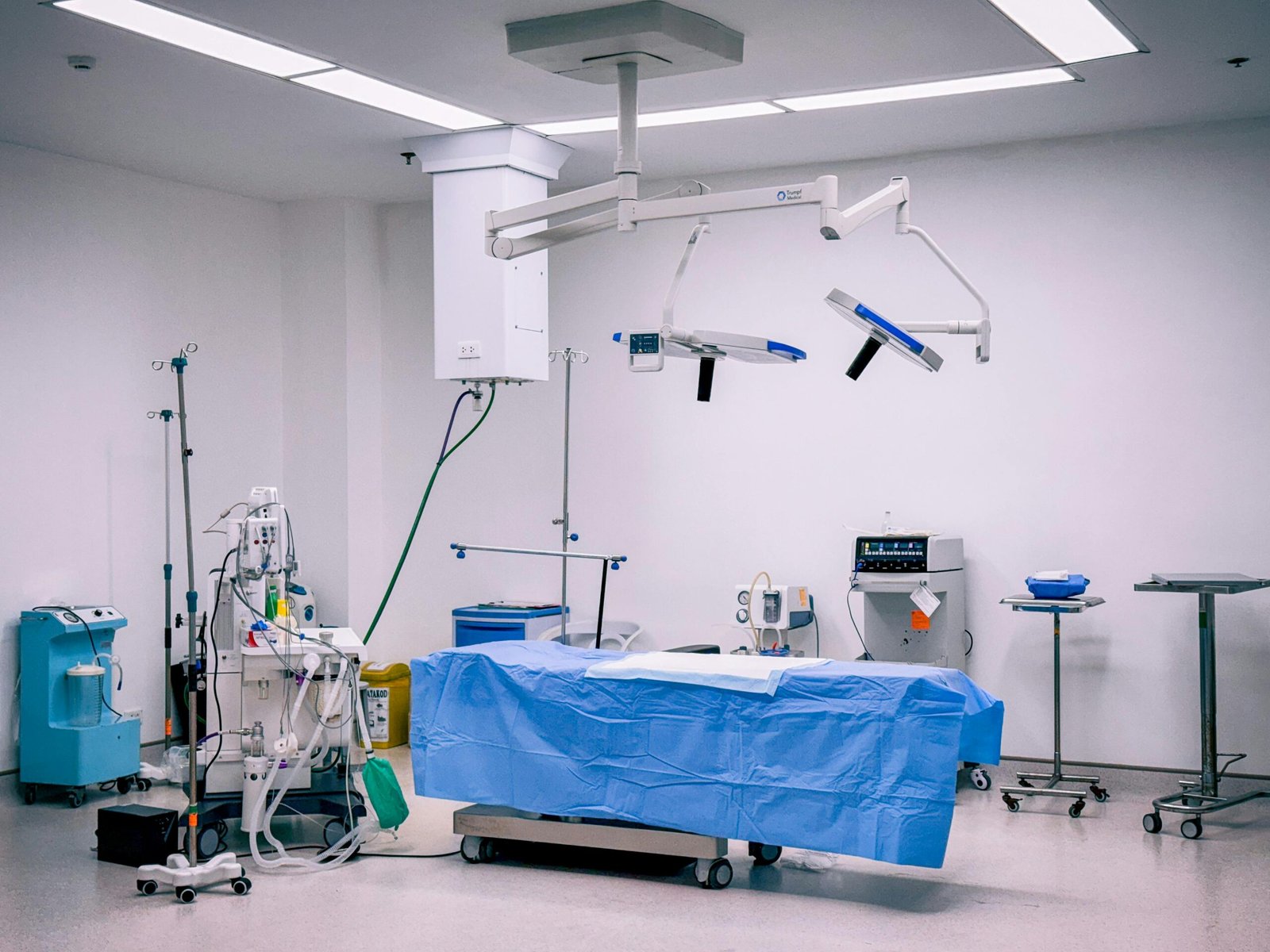The healthcare industry has always been at the forefront of technological advancements, and in 2025, we’re seeing some truly groundbreaking innovations that are reshaping how we diagnose, treat, and manage health conditions. These technological developments not only improve patient care but also streamline healthcare systems, making them more efficient and accessible. From artificial intelligence (AI) to robotic surgery and telemedicine, the future of healthcare is more connected, precise, and personalized than ever before.
In this article, we’ll explore the most exciting tech innovations that are changing healthcare and how they’re improving the quality of care for patients around the world.
1. Artificial Intelligence (AI) in Healthcare
Artificial Intelligence is rapidly becoming one of the most powerful tools in healthcare. With the ability to analyze vast amounts of data quickly and accurately, AI is revolutionizing diagnosis, treatment planning, and patient management.
Key applications of AI in healthcare:
- Early Disease Detection: AI algorithms can analyze medical imaging (such as X-rays, MRIs, and CT scans) to detect conditions like cancer, heart disease, and neurological disorders at earlier stages than human doctors. AI-powered tools can even predict a patient’s risk of developing certain diseases based on their medical history and lifestyle factors.
- Personalized Treatment Plans: AI helps doctors develop more tailored treatment plans by analyzing a patient’s genetic information, lifestyle, and response to previous treatments. This ensures that patients receive the most effective treatment for their specific needs.
- Clinical Decision Support: AI-powered systems are aiding clinicians in making real-time decisions by providing them with evidence-based insights and recommendations, reducing the likelihood of human error and improving patient outcomes.
As AI continues to evolve, we’ll see even more sophisticated applications, such as predictive models for disease outbreaks, virtual health assistants, and more personalized patient care.
2. Telemedicine: Virtual Care for a Remote World
Telemedicine has been around for some time, but with the COVID-19 pandemic and the need for social distancing, it exploded in popularity. By 2025, telemedicine has become an essential part of the healthcare system, allowing patients to consult with healthcare professionals remotely, saving both time and money.
How telemedicine is changing healthcare:
- Access to Care: Patients in rural or underserved areas can access healthcare services without traveling long distances. Telemedicine enables patients to consult with specialists or general practitioners from the comfort of their homes.
- Convenience for Patients: Virtual consultations provide greater flexibility, allowing patients to schedule appointments outside of traditional office hours and receive care more quickly.
- Improved Patient Monitoring: Remote monitoring devices, such as wearable health trackers, allow doctors to track patients’ vital signs in real-time, providing them with continuous feedback and allowing for early intervention if necessary.
Telemedicine is not only making healthcare more accessible but also improving patient satisfaction by offering more convenient and flexible care options.
3. Robotic Surgery: Precision and Minimally Invasive Procedures
Robotic surgery is one of the most significant advancements in surgical technology. Using robotic arms controlled by surgeons through a computer interface, robotic surgery allows for greater precision and smaller incisions, leading to faster recovery times and fewer complications.
How robotic surgery is transforming healthcare:
- Minimally Invasive Procedures: Robotic systems enable surgeons to perform complex procedures through small incisions, reducing patient trauma and shortening recovery times.
- Increased Precision: Robotic systems can operate with incredible precision, reducing the margin of error and allowing surgeons to perform delicate surgeries with greater accuracy.
- Faster Recovery: With less invasive procedures, patients typically experience less pain, smaller scars, and a faster return to normal activities. This not only improves the patient’s experience but also reduces the burden on healthcare facilities by shortening hospital stays.
As robotic surgery technology improves, we’ll likely see it used in even more specialties, including orthopedics, urology, and even pediatric surgery.
4. Wearable Health Technology: Monitoring Your Health in Real-Time
Wearable health technology, such as fitness trackers, smartwatches, and continuous glucose monitors, has become increasingly popular over the past few years. In 2025, these devices are not just tracking basic activity levels—they’re becoming essential tools for managing chronic conditions and maintaining overall health.
How wearables are changing healthcare:
- Real-Time Health Monitoring: Wearables now offer continuous monitoring of vital signs such as heart rate, blood pressure, oxygen levels, and sleep patterns. This data can be shared with healthcare providers, allowing for timely interventions if any abnormalities are detected.
- Chronic Disease Management: For patients with conditions like diabetes or hypertension, wearables allow for continuous tracking of blood glucose levels or blood pressure, alerting patients and doctors if readings go outside the healthy range.
- Fitness and Preventative Care: Wearables also help individuals stay on top of their health by tracking physical activity, sleep, and diet. With personalized feedback, users can take proactive steps to prevent conditions like heart disease, obesity, and diabetes.
These devices are empowering individuals to take control of their health while helping doctors deliver more proactive, personalized care.
5. Blockchain Technology: Securing Patient Data
In an increasingly digital world, protecting patient data has become a top priority. Blockchain technology, which provides a secure and transparent way to store data, is gaining traction in healthcare for safeguarding patient information and streamlining administrative processes.
How blockchain is revolutionizing healthcare:
- Secure Patient Records: Blockchain can securely store patient data, ensuring that it is only accessible by authorized individuals. This eliminates the risk of data breaches and ensures that sensitive information remains protected.
- Efficient Healthcare Supply Chain: Blockchain technology can be used to track the movement of medical supplies, ensuring that medications and equipment are not tampered with and that they are delivered to the right places at the right time.
- Streamlined Billing and Payments: Blockchain’s transparency and security features can help streamline healthcare billing processes, reducing fraud and simplifying transactions between patients, healthcare providers, and insurers.
As blockchain continues to evolve, it has the potential to transform not only data security but also the overall healthcare system, making it more efficient, transparent, and cost-effective.
6. 3D Printing in Medicine: Customized Solutions for Patients
3D printing is already making waves in many industries, but its application in healthcare is particularly exciting. From creating custom prosthetics and implants to printing tissues and organs, 3D printing is changing the way we approach personalized healthcare.
How 3D printing is transforming healthcare:
- Custom Prosthetics and Implants: 3D printing allows for the creation of custom-made prosthetics and implants tailored to an individual’s specific anatomy. This results in a better fit, increased comfort, and improved functionality for patients.
- Bioprinting Tissues and Organs: While still in its early stages, 3D bioprinting has the potential to print human tissues and even organs, offering a potential solution to the organ donor shortage. Researchers are already printing skin, cartilage, and even liver tissues for use in medical treatments.
- Surgical Planning and Training: Surgeons can use 3D-printed models of a patient’s anatomy to practice complex procedures before performing surgery. This allows for greater precision and reduced risk during the actual procedure.
In the future, 3D printing could revolutionize personalized medicine, offering patients customized solutions that improve both the effectiveness of treatment and their overall experience.
7. Virtual Reality (VR) and Augmented Reality (AR): Immersive Medical Training
Virtual Reality (VR) and Augmented Reality (AR) are enhancing the way medical professionals are trained and how patients experience their care. These technologies offer immersive simulations that can improve skills, reduce anxiety, and even help with rehabilitation.
Applications of VR and AR in healthcare:
- Medical Training and Simulation: Medical students and healthcare professionals can use VR simulations to practice surgeries, diagnose conditions, and improve their clinical skills in a risk-free, virtual environment.
- Patient Education: AR can be used to help patients understand complex medical procedures by providing them with visual, step-by-step explanations of what to expect during treatment or surgery.
- Pain Management and Rehabilitation: VR has shown promise in managing chronic pain and assisting with rehabilitation by providing patients with immersive, therapeutic experiences that distract from pain and promote healing.
These technologies are revolutionizing both medical education and patient care by offering more interactive and engaging experiences.
8. Precision Medicine: Tailoring Treatment to the Individual
Precision medicine takes into account a person’s unique genetic makeup, environment, and lifestyle to tailor medical treatment specifically for them. Advances in genomics and biotechnology have made it possible to deliver highly personalized treatments that are more effective and have fewer side effects.
How precision medicine is changing healthcare:
- Genomic Testing: By analyzing a patient’s DNA, doctors can identify genetic markers that predispose them to certain diseases and conditions. This allows for early detection and personalized prevention strategies.
- Targeted Treatments: Precision medicine allows for the development of treatments that are tailored to a patient’s unique biology. For example, cancer treatments can be customized to target specific mutations in cancer cells, improving effectiveness and reducing harm to healthy tissues.
- Pharmacogenomics: This aspect of precision medicine involves studying how a person’s genetic makeup affects their response to medications. By tailoring prescriptions to a patient’s genetics, doctors can reduce adverse drug reactions and increase the effectiveness of treatments.
With ongoing advancements in genomics and biotechnology, precision medicine will continue to improve patient outcomes by offering more targeted and individualized care.
9. Smart Hospitals: The Future of Healthcare Infrastructure
Smart hospitals are the next step in the evolution of healthcare facilities. By incorporating Internet of Things (IoT) devices, AI, and automation, smart hospitals aim to improve patient care, enhance efficiency, and reduce costs.
How smart hospitals are changing healthcare:
- Connected Devices: IoT devices in hospitals can continuously monitor patient vitals, track medical equipment, and even manage inventory, providing real-time data that can improve decision-making and patient care.
- AI-Powered Management: AI systems can optimize hospital operations by analyzing data on patient flow, staffing, and resource usage, ensuring that hospitals run as efficiently as possible.
- Robotics in Care: Robots can assist with routine tasks such as delivering medications, cleaning rooms, and even helping with patient rehabilitation, allowing healthcare workers to focus more on patient care.
Smart hospitals are setting the stage for a future where healthcare is more efficient, connected, and patient-centered.
Conclusion: A Healthier, More Connected Future
From AI and telemedicine to robotic surgery and precision medicine, these tech innovations are not only improving patient care but also reshaping the entire healthcare landscape. As technology continues to evolve, the future of healthcare will be more personalized, efficient, and accessible than ever before.
With these advancements, patients can look forward to better treatment outcomes, fewer errors, and a healthcare system that is more proactive, preventive, and centered on their needs. The future is bright, and the healthcare revolution has only just begun.
FAQs
1. How is AI improving diagnostic accuracy?
AI algorithms analyze medical images and patient data to identify patterns and abnormalities that may be missed by human doctors. This allows for earlier detection of diseases, such as cancer, and more accurate diagnoses.
2. Are wearables only for fitness tracking?
No, wearables have expanded beyond fitness tracking. They can monitor vital signs, such as heart rate, blood pressure, and blood glucose levels, and send real-time data to healthcare providers for ongoing monitoring and early intervention.
3. Is telemedicine secure for patient consultations?
Yes, telemedicine platforms use encryption and secure protocols to ensure patient data remains confidential and protected. Many platforms are also HIPAA-compliant, meaning they meet the privacy standards set by the U.S. government.
4. How can blockchain technology benefit healthcare providers?
Blockchain can improve data security, streamline billing and payments, reduce fraud, and create transparent, tamper-proof records, making healthcare operations more efficient and secure.
5. Will 3D printing be used to print organs in the near future?
While 3D bioprinting of organs is still in early stages, researchers are making progress in printing tissues and even organ-like structures. In the future, 3D printing could help address the organ transplant shortage by creating custom tissue for patients.



